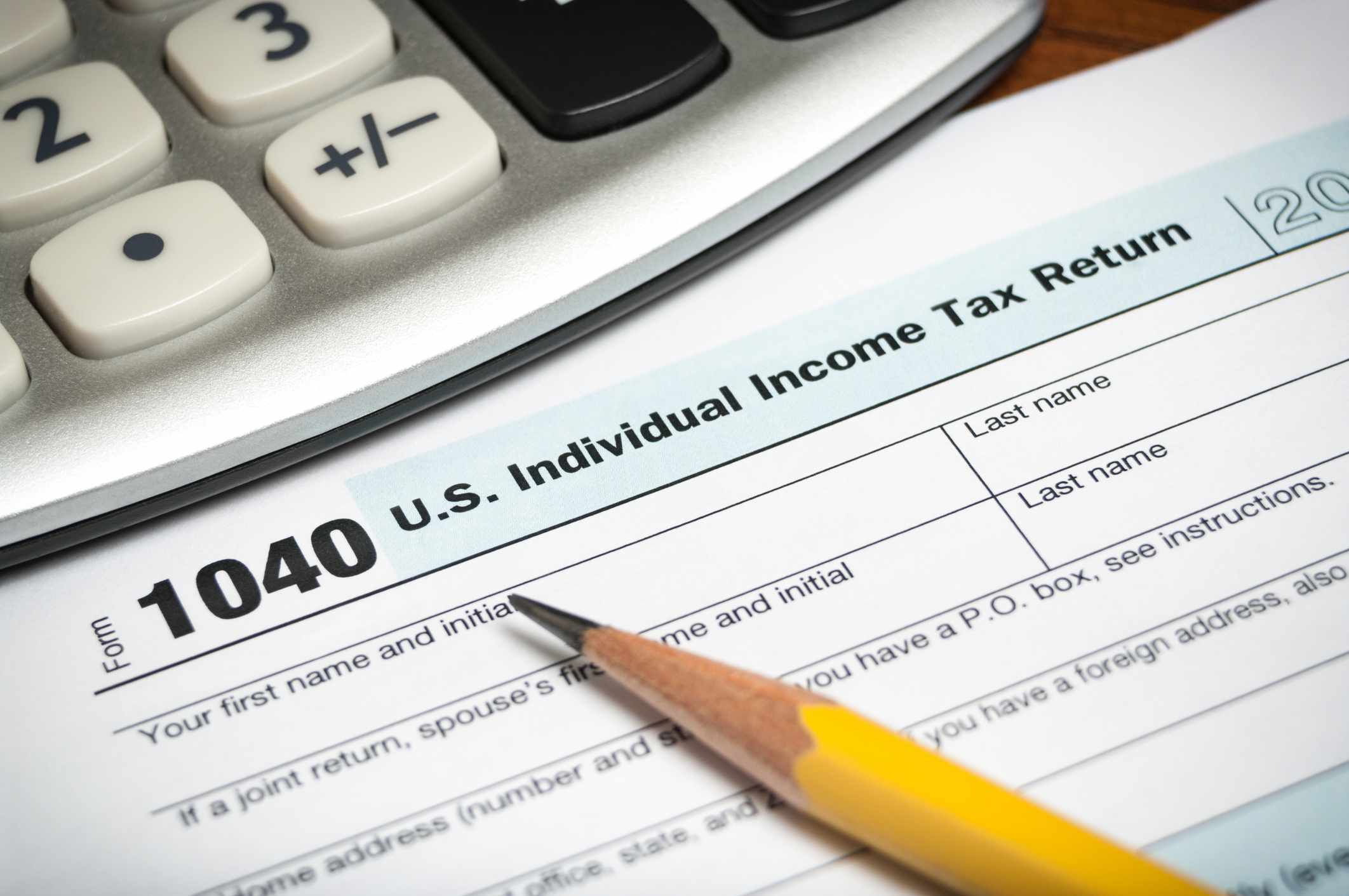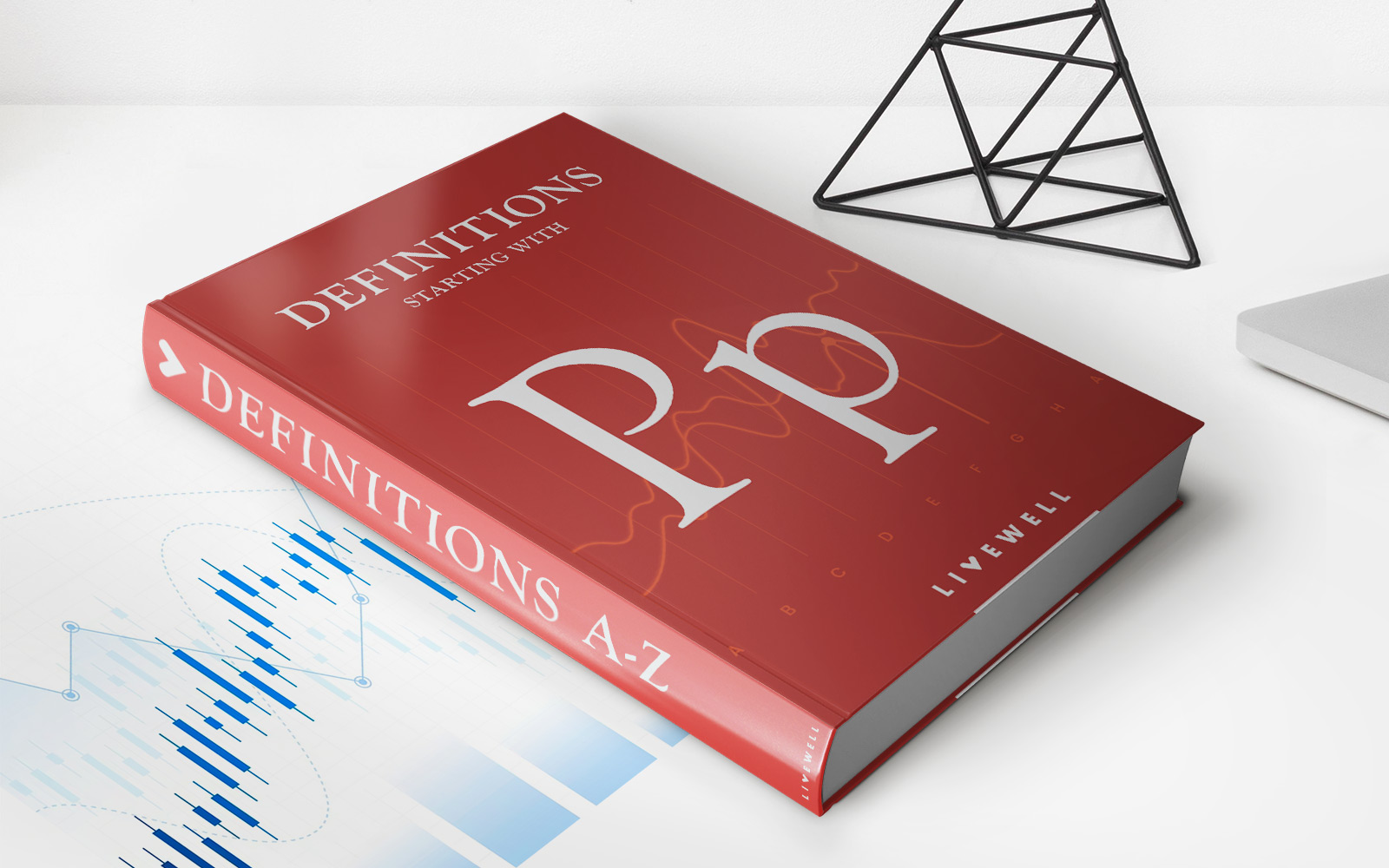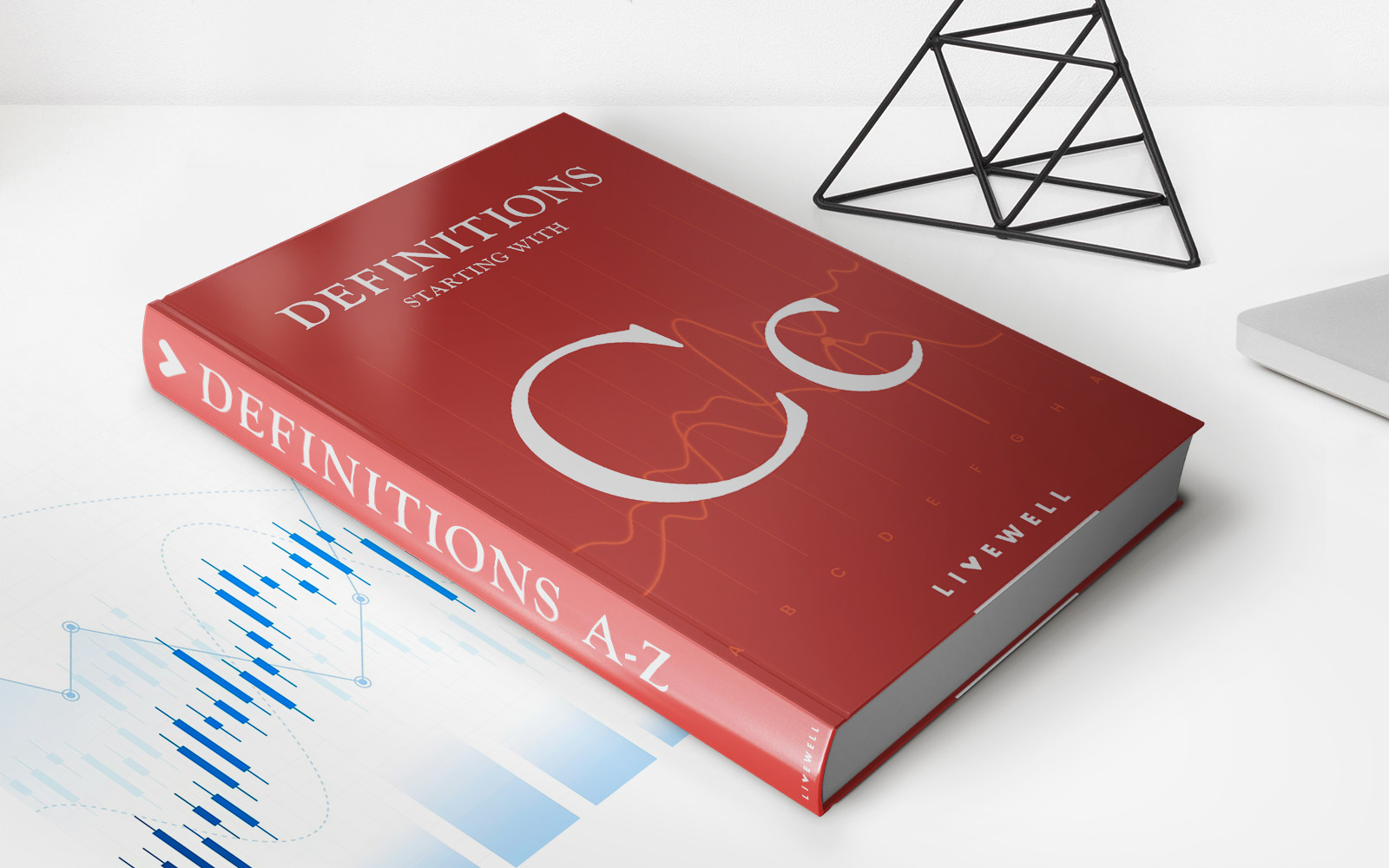

Finance
What Is Graded Premium Life Insurance
Published: November 14, 2023
Discover the benefits of graded premium life insurance and how it can provide financial security for you and your loved ones. Learn more about finance options for this type of coverage.
(Many of the links in this article redirect to a specific reviewed product. Your purchase of these products through affiliate links helps to generate commission for LiveWell, at no extra cost. Learn more)
Table of Contents
- Introduction
- Definition of Graded Premium Life Insurance
- How Graded Premium Life Insurance Works
- Advantages of Graded Premium Life Insurance
- Disadvantages of Graded Premium Life Insurance
- Eligibility Criteria for Graded Premium Life Insurance
- Cost and Premium Structure of Graded Premium Life Insurance
- Comparison with Other Types of Life Insurance
- Conclusion
Introduction
Life insurance is a crucial financial tool that helps provide financial security to your loved ones in the event of your untimely demise. However, the cost of traditional life insurance policies can be a major deterrent for many individuals. This is where graded premium life insurance comes into play. Graded premium life insurance offers a more affordable option for those who may not have the means to pay high premiums initially.
Graded premium life insurance is a type of life insurance policy where the premium payments start low and increase over time. This allows policyholders to gradually adjust to higher premiums as their financial situation improves. It is especially beneficial for individuals who are starting their careers or facing financial constraints but still want to secure a life insurance policy.
With graded premium life insurance, the initial premiums are lower compared to traditional life insurance policies. This makes it more accessible for individuals who may not have much disposable income in the early stages of their life. As the policyholder ages, the premiums gradually increase, aligning with their ability to pay as their earning potential and financial stability improve.
One of the key advantages of graded premium life insurance is that it allows individuals to purchase a life insurance policy at a younger age when they may be healthier and potentially more insurable. This can help lock in lower premiums for the future, providing long-term financial protection at a more affordable cost.
Additionally, graded premium life insurance offers flexibility for policyholders. If financial circumstances improve or if they want to allocate more of their budget towards their life insurance coverage, they can choose to pay higher premiums voluntarily. This can help accelerate the growth of the policy’s cash value and enhance the overall financial benefits.
It’s important to note that graded premium life insurance policies typically have a maximum premium cap, ensuring that the policyholder’s payments do not become unaffordable as they age. This ensures that the policyholder can continue to maintain the coverage in the long run without any financial strain.
In the following sections, we will delve deeper into how graded premium life insurance works, its advantages and disadvantages, eligibility criteria, and how it compares to other types of life insurance policies. This will help you determine whether graded premium life insurance is the right choice for your financial needs.
Definition of Graded Premium Life Insurance
Graded premium life insurance is a type of life insurance policy that offers lower premium payments initially, which gradually increase over time. This type of policy is designed to provide more affordable options for individuals who may not have the means to pay high premiums at the outset of their policy.
With graded premium life insurance, the premium payments start off lower in the early years of the policy. The premiums are typically set at a level that is more manageable for individuals who may be starting their careers or facing financial constraints. This means that during the initial years, policyholders pay lower premiums compared to other types of life insurance policies.
However, as the policyholder ages, the premiums gradually increase. This increase is typically predetermined by the insurance company and is known to the policyholder upfront. The premium increases are designed to align with the policyholder’s improving financial abilities as they progress in their career and increase their earning potential.
Graded premium life insurance offers more accessible options for individuals who want to secure life insurance coverage but may not have the financial means to pay higher premiums immediately. It allows them to start with lower premiums and gradually adjust to higher premium payments as their financial situation improves over time.
It’s important to note that graded premium life insurance policies have a maximum premium cap. This means that the premiums will reach a maximum limit, ensuring that the policyholder’s payments do not become unaffordable as they age. This feature provides peace of mind and allows policyholders to continue maintaining the coverage without any financial strain.
Graded premium life insurance policies are typically permanent life insurance policies, meaning they provide coverage for the policyholder’s entire lifetime as long as the premiums are paid. These policies also have a cash value component, where a portion of the premium payments goes towards accumulating cash value that can be accessed or borrowed against during the policyholder’s lifetime.
Overall, graded premium life insurance offers individuals a more affordable and flexible option to secure life insurance coverage. It allows policyholders to start with lower premium payments and gradually adjust to higher premiums as their financial circumstances improve. This type of life insurance can be a suitable choice for individuals who want to ensure long-term financial protection without the burden of high initial premiums.
How Graded Premium Life Insurance Works
Graded premium life insurance works by offering policyholders lower premium payments in the early years of the policy, which gradually increase over time. Let’s take a closer look at how this type of life insurance works:
1. Initial Premiums: With graded premium life insurance, the initial premiums are set at a lower level compared to traditional life insurance policies. This makes it more affordable for individuals who may have limited financial resources in the early stages of their lives. The initial premiums are calculated based on factors such as the age, health, and coverage amount of the policyholder.
2. Gradual Increase: As the policyholder ages, the premiums gradually increase over time. The increase is predetermined by the insurance company and is known to the policyholder upfront. The purpose of the gradual increase in premiums is to align with the policyholder’s improving financial abilities as they progress in their career and increase their earning potential.
3. Maximum Premium Cap: Graded premium life insurance policies have a maximum premium cap. This ensures that the premiums will reach a maximum limit, preventing them from becoming unaffordable for the policyholder as they age. The maximum premium cap provides peace of mind, knowing that the policyholder can continue maintaining the coverage without any financial strain.
4. Cash Value Component: Graded premium life insurance policies typically have a cash value component. A portion of the premium payments goes towards accumulating cash value within the policy. This cash value grows over time and can be accessed or borrowed against during the policyholder’s lifetime. The cash value component provides additional flexibility and can be a valuable financial resource for the policyholder.
5. Death Benefit: Like other life insurance policies, graded premium life insurance provides a death benefit to the beneficiaries upon the policyholder’s death. The death benefit is the amount that is paid out to the beneficiaries and can help provide financial security and support to cover expenses such as funeral costs, outstanding debts, and ongoing living expenses.
It’s important to note that graded premium life insurance policies are typically permanent life insurance policies, meaning they provide coverage for the policyholder’s entire lifetime as long as the premiums are paid. Permanent life insurance policies not only offer a death benefit but also build cash value over time, making them a valuable asset in the policyholder’s financial portfolio.
In summary, graded premium life insurance offers individuals the opportunity to start with lower premium payments and gradually adjust to higher premiums over time. This type of life insurance provides a more accessible and flexible option for individuals with limited financial resources in the early stages of their lives, ensuring long-term financial protection and peace of mind.
Advantages of Graded Premium Life Insurance
Graded premium life insurance offers several advantages that make it an attractive option for individuals seeking life insurance coverage. Let’s explore some of the key advantages of graded premium life insurance:
1. Affordable Initial Premiums: One of the primary advantages of graded premium life insurance is that it provides more affordable premium options initially. Compared to traditional life insurance policies, the initial premium payments are lower, making it accessible for individuals who may have limited financial resources, such as young professionals or those facing financial constraints.
2. Gradual Premium Increase: With graded premium life insurance, the premiums gradually increase over time. This allows policyholders to adjust to higher premium payments as their financial situation improves. This gradual increase ensures that the policy remains affordable and manageable for the policyholder, providing long-term financial stability.
3. Lock in Lower Premiums: Graded premium life insurance allows individuals to secure life insurance coverage at a younger age when they may be healthier and potentially more insurable. This offers the opportunity to lock in lower premiums for the future. As individuals age, their insurability may change, and premiums for new policies may be higher. Opting for graded premium life insurance early on ensures that the policyholder can secure affordable coverage for the long term.
4. Flexibility with Premium Payments: Graded premium life insurance provides flexibility in premium payments. If the policyholder’s financial circumstances improve or they have more disposable income, they can choose to pay higher premiums voluntarily. This can help accelerate the growth of the policy’s cash value and provide additional benefits to the policyholder.
5. Cash Value Accumulation: Graded premium life insurance policies typically have a cash value component. A portion of the premium payments goes towards accumulating cash value over time. This cash value can be accessed or borrowed against during the policyholder’s lifetime. It serves as a valuable financial resource that can be utilized for various purposes, such as funding education, supplementing retirement income, or addressing unforeseen financial emergencies.
6. Lifetime Coverage: Graded premium life insurance is often a form of permanent life insurance, providing coverage for the policyholder’s entire lifetime as long as the premiums are paid. This ensures that the policyholder remains protected throughout their life, regardless of any changes in health or insurability. Lifetime coverage offers peace of mind, knowing that loved ones will receive a death benefit upon the policyholder’s passing.
In summary, graded premium life insurance offers several advantages, including affordability, flexibility, and the opportunity to lock in lower premiums. It provides individuals with the ability to secure life insurance coverage at an early age and gradually adjust to higher premium payments as their financial situation improves. The cash value component and lifetime coverage further enhance the benefits of graded premium life insurance, making it a valuable tool for long-term financial protection.
Disadvantages of Graded Premium Life Insurance
While graded premium life insurance offers several advantages, it’s important to consider the potential disadvantages before deciding if it’s the right option for you. Here are some of the key disadvantages of graded premium life insurance:
1. Increasing Premiums: One of the main disadvantages of graded premium life insurance is the incremental increase in premiums over time. While the initial premiums are lower, policyholders need to be prepared for the gradual increase in premium payments as they age. This can become a financial burden, especially if the policyholder’s income does not increase proportionately or if they face other financial obligations.
2. Higher Long-Term Costs: Despite the lower initial premiums, graded premium life insurance can be more expensive in the long run compared to other types of life insurance policies. This is due to the cumulative effect of the increasing premiums over time. It’s essential to carefully evaluate the long-term costs and weigh them against the potential benefits to ensure that it aligns with your financial goals and resources.
3. Affordability Concerns: Although graded premium life insurance is designed to provide more affordable options, it may still not be feasible for individuals with limited financial means. Even the lower initial premiums may be difficult to manage for individuals facing significant financial constraints. It’s crucial to assess your financial situation and ensure that the gradual increase in premiums remains within your affordability limits.
4. Limited Policy Options: Graded premium life insurance policies may have limited coverage options compared to other types of life insurance policies. Insurance companies might offer a narrower range of policy features, riders, or add-ons for graded premium policies. This lack of flexibility may limit your ability to tailor the policy to your specific needs or add additional benefits that you may require for comprehensive coverage.
5. Potential Underinsurance: The gradual increase in premiums with graded premium life insurance may result in policyholders being underinsured if they are unable to keep up with the increasing premium payments. If the policyholder misses premium payments or decides to stop paying altogether, the coverage may be reduced or terminated, leaving the policyholder and their beneficiaries with inadequate protection.
6. Limited Cash Value Growth: While graded premium life insurance policies do accumulate cash value over time, the growth rate may be slower compared to other types of permanent life insurance policies. With the lower initial premiums, a smaller portion of the premium goes towards cash value accumulation. As a result, the policy’s cash value may not grow as rapidly, limiting the potential benefits that can be accessed during the policyholder’s lifetime.
It is important to carefully evaluate the pros and cons of graded premium life insurance and consider your financial circumstances, risk tolerance, and long-term goals before making a decision. Consulting with a knowledgeable insurance professional can help you assess your options and determine the most suitable life insurance policy for your needs.
Eligibility Criteria for Graded Premium Life Insurance
When considering graded premium life insurance, it’s important to understand the eligibility criteria that insurance companies may have in place. While specific requirements may vary among insurance providers, here are some common factors that are considered when determining eligibility for graded premium life insurance:
1. Age: Age is a crucial factor in determining eligibility for graded premium life insurance. Insurance companies typically offer this type of policy to individuals who are between a certain age range, such as 18 to 65 years old. Younger individuals may have a higher chance of meeting the eligibility criteria, as they are more likely to qualify for lower initial premiums.
2. Health Condition: Most insurance companies require applicants to undergo a medical examination to assess their health condition. This examination helps insurance providers evaluate the risk associated with insuring an individual. While graded premium life insurance may be more lenient in terms of health requirements compared to other types of life insurance policies, individuals with pre-existing medical conditions or high-risk occupations may still face restrictions or higher premiums.
3. Smoking Status: Smoking is a significant consideration for life insurance eligibility. Smokers generally pose a higher risk to insurance companies due to the associated health risks. If you are a smoker, you may still be eligible for graded premium life insurance, but you can expect to pay higher premiums compared to non-smokers.
4. Financial Stability: Insurance companies may also consider the financial stability of applicants. While graded premium life insurance is designed to be more affordable initially, insurance providers may still evaluate the income and financial resources of applicants to ensure that they can meet the increasing premium payments over time.
5. Policy Amount: The amount of coverage you are seeking can also affect your eligibility for graded premium life insurance. Some insurance companies may set minimum and maximum coverage limits for this type of policy. The specific financial requirements for coverage may vary among providers, so it’s important to inquire about the available policy amounts when considering graded premium life insurance.
It’s worth noting that each insurance company may have its own set of eligibility criteria and underwriting guidelines. It’s always recommended to consult with an insurance professional who can help assess your specific situation and guide you through the application process.
Additionally, if you have been declined for traditional life insurance policies due to health concerns or other factors, graded premium life insurance may offer a more accessible option. While the premium payments may be higher compared to individuals in better health, it can still provide a valuable solution for obtaining life insurance coverage.
Remember that meeting the eligibility criteria does not guarantee approval for graded premium life insurance. Insurance companies make individual assessments based on various factors, and each application is subject to underwriting approval.
By understanding the eligibility criteria for graded premium life insurance, you can better assess whether you meet the requirements and determine if this type of policy is the right choice for your financial needs.
Cost and Premium Structure of Graded Premium Life Insurance
Graded premium life insurance offers a unique premium structure designed to provide more affordable options initially and gradually increase over time. Here’s a closer look at the cost and premium structure of graded premium life insurance:
1. Initial Premiums: The initial premiums of graded premium life insurance are set at a lower level compared to traditional life insurance policies. The specific amount varies based on factors such as the age, health, and coverage amount of the policyholder. The initial premiums are calculated to be more manageable for individuals who may have limited financial means, such as those in the early stages of their careers.
2. Gradual Premium Increase: Unlike traditional life insurance policies with fixed premiums, graded premium life insurance features a gradual premium increase over time. The increase in premiums is predetermined by the insurance company and known to the policyholder upfront. Typically, the premium payments increase yearly or at designated intervals. This gradual increase allows policyholders to adjust to higher premium payments as their financial situation improves with age and career progression.
3. Maximum Premium Cap: Graded premium life insurance policies have a maximum premium cap. This cap ensures that premium payments reach a limit that remains affordable for the policyholder. The maximum premium cap provides peace of mind, knowing that the policyholder will not face an unmanageable financial strain as they age. The specific cap amount varies among insurance providers and may be influenced by factors such as the policyholder’s age at the time of application.
4. Policy Duration: Graded premium life insurance policies are typically permanent life insurance policies, meaning they provide coverage for the policyholder’s entire lifetime, as long as the premiums are paid. The length of coverage is not contingent on the premium structure; it remains in force as long as the policyholder continues to pay the scheduled premiums. This ensures that the policyholder remains protected throughout their life, regardless of any health changes or other factors that may arise.
5. Affordability Considerations: While graded premium life insurance is designed to be more affordable initially, policyholders should consider the long-term cost. Over time, the cumulative effect of the increasing premiums may result in higher costs compared to other types of life insurance policies, such as level premium policies. It is crucial to evaluate the long-term affordability and ensure that the premiums remain within budget as they gradually increase in the future.
6. Cash Value Accumulation: Graded premium life insurance policies typically have a cash value component. A portion of the premium payments is allocated towards accumulating cash value within the policy. This cash value grows over time, allowing the policyholder to build a financial asset that can be accessed or borrowed against during their lifetime. The growth of the cash value varies based on the policy’s specific terms and the performance of the underlying investments.
It is important to note that the actual cost and premium structure of graded premium life insurance will vary depending on factors such as the insurance company, the policyholder’s age, health, coverage amount, and other individual circumstances. It is recommended to review multiple insurance providers, compare their offerings, and consult with an insurance professional to determine the most suitable graded premium life insurance policy based on your financial goals and resources.
By understanding the cost and premium structure of graded premium life insurance, you can make an informed decision and assess whether this type of policy aligns with your financial needs and long-term affordability.
Comparison with Other Types of Life Insurance
When considering life insurance options, it’s essential to compare graded premium life insurance with other types of life insurance policies to determine which one best suits your needs. Here’s a comparison of graded premium life insurance with other common types of life insurance:
1. Term Life Insurance: Term life insurance provides coverage for a specified period, such as 10, 20, or 30 years. Unlike graded premium life insurance, term life insurance offers fixed premiums that remain the same throughout the specified term. Term life insurance is generally the most affordable option initially, but keep in mind that premiums increase significantly when the term is up for renewal. Graded premium life insurance may be a better choice for individuals seeking lifelong coverage or a more gradual premium increase over time.
2. Whole Life Insurance: Whole life insurance is a form of permanent life insurance that provides coverage for the policyholder’s entire lifetime. Premiums for whole life insurance are typically higher than graded premium life insurance, but they remain level throughout the policy’s duration. Whole life insurance also offers a cash value component that grows over time, allowing policyholders to access or borrow against the accumulated cash value. Graded premium life insurance may be more suitable for individuals who prefer lower initial premiums and a gradually increasing premium structure.
3. Universal Life Insurance: Universal life insurance is another type of permanent life insurance policy that combines a death benefit with a cash value component. Similar to graded premium life insurance, universal life insurance offers more flexible premium payment options. Policyholders can choose to adjust their premiums and death benefits within certain limits, allowing for greater customization. Universal life insurance may be preferable for those seeking more control over their coverage and premium payments, although it may come with higher fees and a more complex structure.
4. Variable Life Insurance: Variable life insurance is a type of permanent life insurance that allows policyholders to allocate their premium payments into investment accounts, such as stocks or mutual funds. The cash value and death benefit of variable life policies fluctuate based on the performance of the underlying investments. Graded premium life insurance may be a better option for individuals who prioritize predictable premium payments and are not interested in assuming the investment risks associated with variable life insurance.
When comparing graded premium life insurance with other types of life insurance, it’s important to consider factors such as affordability, long-term costs, flexibility, and the specific needs of your financial situation. Each type of life insurance has its own advantages and disadvantages, so it’s crucial to assess which features align best with your goals and resources.
Consulting with a knowledgeable insurance professional can help you understand the nuances of each option and guide you toward the most suitable life insurance policy based on your individual circumstances. By comparing and evaluating different types of life insurance, you can make an informed decision and select the policy that provides the right balance of coverage, affordability, and financial benefits for you and your loved ones.
Conclusion
Graded premium life insurance offers individuals a more accessible and flexible option for obtaining life insurance coverage. With lower initial premiums and a gradual increase over time, it can provide a financial safety net while accommodating evolving financial circumstances. However, before deciding on graded premium life insurance, it’s important to carefully consider its advantages and disadvantages.
The advantages of graded premium life insurance include the affordability of initial premiums, the ability to lock in lower premiums at a younger age, flexibility with premium payments, the accumulation of cash value, and lifetime coverage. These factors can make it a suitable choice for individuals who want to secure life insurance but have limited financial means initially.
On the other hand, graded premium life insurance does come with some disadvantages. These include the increasing premiums over time, higher long-term costs compared to other types of life insurance policies, potential affordability concerns, limited policy options, potential underinsurance if premium payments are not maintained, and slower cash value growth compared to other permanent life insurance policies.
It’s crucial to assess your financial situation, risk tolerance, and long-term goals when considering graded premium life insurance. Take into account factors such as age, health condition, smoking status, financial stability, and policy amount to determine eligibility and affordability. Additionally, compare graded premium life insurance against other types of life insurance policies, such as term life, whole life, universal life, and variable life insurance, to find the best fit for your needs.
Ultimately, a comprehensive evaluation and consultation with an insurance professional can help you make an informed decision and select the life insurance policy that aligns with your unique circumstances and goals. Remember, life insurance is an essential financial tool that provides peace of mind and financial protection for your loved ones, so choosing the right policy is crucial.
Consider all the factors discussed in this article, weigh the benefits and drawbacks, and carefully review your options before making a decision. By doing so, you can confidently choose the life insurance policy that offers the best combination of coverage, affordability, and long-term financial benefits for you and your family.














